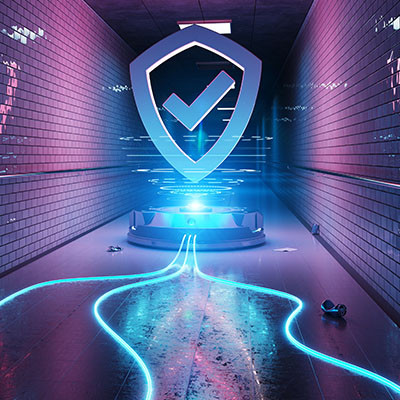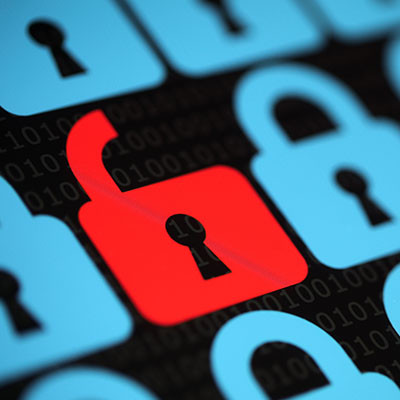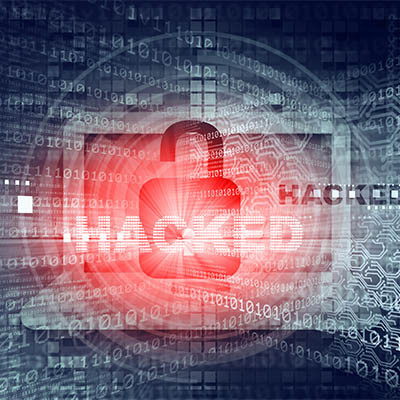CIT Solutions Blog
With technology being an integral part of our lives and society at large, cyberthreats continue to evolve and pose significant risks. One such threat that is on the rise is browser hijacking attacks. Let’s explore the dangers of these attacks, including the techniques employed by hackers, and how small and medium-sized businesses can protect themselves.
Cyberattacks are a serious problem that all businesses face in some form or another, but there are small, everyday tasks you can do to ensure that they impact your organization as minimally as possible. It takes intention and effort to protect your business and its infrastructure, but that doesn’t mean that it has to be hard. Here are three simple ways you can keep your infrastructure secure.
The modern threat landscape is vast and unpredictable, and even if you think you know enough about cybersecurity to protect your business, we bet that you don’t. It’s not even just in the business world, either; individuals also struggle against cyberthreats, and so too do IT administrators. The next couple of weeks will be dedicated to cybersecurity to get across everything you need to know about it.
As a business professional, it’s your responsibility to protect your company’s digital assets from cybercrime, but the path forward is not always so easy or clear-cut. Without a thorough knowledge and expertise of IT security at your disposal, it can be challenging to protect your infrastructure as adequately as it needs to be. Here are some of the common issues that involve cybersecurity, as well as how you can address them.
Businesses today have to deal with more potential problems than in any time in history. They are dealing with cost increases at every turn, personnel shortages, and a regulatory landscape that is always evolving. One of the biggest issues that can have a negative effect on a business is not having the processes and resources in place and working to secure its data and network. Today, we will look at five suggestions that can work to help your business keep its network and data more secure.
Security is an incredibly important part of running a business, but it’s extremely easy for busy employees to fall short of the security expectations you might place on them. This is why it is so important to train your employees on the many facets of cybersecurity. By training them, you are preparing them to tackle the plethora of challenges they will encounter throughout the workday.
How many security solutions does your organization have implemented at any given time? Traditionally, businesses have implemented what we call “point solutions,” which are software tools designed to address a specific part of your security infrastructure. While this approach is certainly better than not having security at all, it presents several problems that must also be addressed in order to most effectively protect your organization.
Your company’s email is one of its most important pieces of technology, and since that is true for nearly every business, it is unfortunately one of the most utilized attack vectors used by cybercriminals. Most businesses don’t understand just how vulnerable they are if their email isn’t properly secured and do their best to keep their employees trained on how to spot potential scams.
With so many wireless networks available to connect to, it’s no surprise that wireless security is a cornerstone of working while on the go. We thought it would be helpful to have a list of best practices to help ensure your wireless networks, and the devices connecting to them, are as secure as possible.
If there is one shared priority most businesses and other organizations need to have it’s a strategy on how they are going to go about securing their network, infrastructure, and data from the numerous threats they face. Let’s take a look at three of the most crucial issues surrounding organizational cybersecurity as we head into the new year.
Smart devices and Internet-of-Things devices in general have taken the world by storm, and a home without at least a handful of smart devices is quite rare to find these days. However, smart devices—or devices that connect to the Internet to perform various functions—must be approached with a certain level of caution.
Many threats immediately make themselves known on your device the second they install themselves, like ransomware and other types of malware. Others, like this newly discovered threat called MosaicLoader, discreetly install themselves in the background of your device and cause problems behind the scenes.
It’s not unheard of for some threats to remain undiscovered for months or even years, as is the case with a particularly nasty one in the Microsoft Azure database system. This exploit, discovered by cloud security provider Wiz, is built into Cosmos DB, Microsoft Azure’s managed database service. Let’s take a look at the exploit and see what we can learn from it.
Another ransomware threat is out and about, this time targeting unpatched and end-of-life products in SonicWall’s Secure Mobile Access (SMA) 100 series and Secure Remote Access (SRA) products. To make things worse, the threat is currently being used, so businesses utilizing these devices must take action now to limit how much damage this ransomware can do.
Security can be tough for small businesses to optimize, but that does not make it any less important. One such way that security can work against you is actually your employees’ predispositions toward it; the cognitive biases that your employees have regarding security can put your company at risk, even if that is the last thing on their minds.
Cybersecurity is one of those components to an IT strategy that is absolutely critical; you cannot ignore it in today’s age of ransomware and other high-profile hacks. In order to make sure that you are prepared to handle anything that comes your way, you must periodically test your security practices and assess how well your team can prepare for attacks. The question remains as to how often you should do this.
Few things are scarier for a modern business to consider than the idea that they will be hacked, regardless of that business’ size or industry. After all, hacking can, will, and does cause significant damage across basically all aspects of your organization. This is precisely why it is so important that—should a business be hacked—the proper steps are taken in response.
Over the past year, entrepreneurs have focused on how to do business during the global COVID-19 pandemic. The public health crisis has been an opportunity for fraudsters and hackers, and the result has been an increase in losses (compared to the second-worst period on record) by over 50 percent. Let’s consider the situation, and how it is—unfortunately—getting worse.
With the given pandemic, a lot of people have had a bit more time on their hands, so it makes sense that many are turning to streaming services and the like for their entertainment. Unfortunately, this has not gone unnoticed by cybercriminals.
Let’s take a few moments and examine the practice of credential stuffing.




















